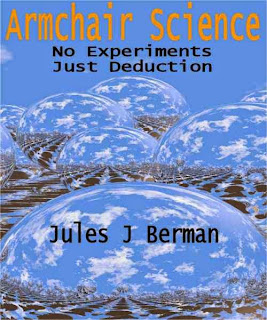NEOCLXML.GZ 716,963 bytes and
NEOSELF.GZ 1,086,677 bytes
Neoclxml.gz expands to over 10 Megabytes and is an XML file.
Neoself.gz expands to over 20 Megabytes and is a flat-file.
Each file contains over 145,000 neoplasm terms grouped in >6,000 concepts, and classified according to embryonic lineage. This is, by far, the most extensive nomenclature and classification of neoplasms in existence. It is copyrighted to Jules J. Berman and distributed under a GNU document license.
Detailed information on the classification is available in my article:
Tumor classification: molecular analysis meets Aristotle
tags: cancer, medical terminology, nomenclature, open access, open source
Science is not a collection of facts. Science is what facts teach us; what we can learn about our universe, and ourselves, by deductive thinking. From observations of the night sky, made without the aid of telescopes, we can deduce that the universe is expanding, that the universe is not infinitely old, and why black holes exist. Without resorting to experimentation or mathematical analysis, we can deduce that gravity is a curvature in space-time, that the particles that compose light have no mass, that there is a theoretical limit to the number of different elements in the universe, and that the earth is billions of years old. Likewise, simple observations on animals tell us much about the migration of continents, the evolutionary relationships among classes of animals, why the nuclei of cells contain our genetic material, why certain animals are long-lived, why the gestation period of humans is 9 months, and why some diseases are rare and other diseases are common. In “Armchair Science”, the reader is confronted with 129 scientific mysteries, in cosmology, particle physics, chemistry, biology, and medicine. Beginning with simple observations, step-by-step analyses guide the reader toward solutions that are sometimes startling, and always entertaining. “Armchair Science” is written for general readers who are curious about science, and who want to sharpen their deductive skills.
